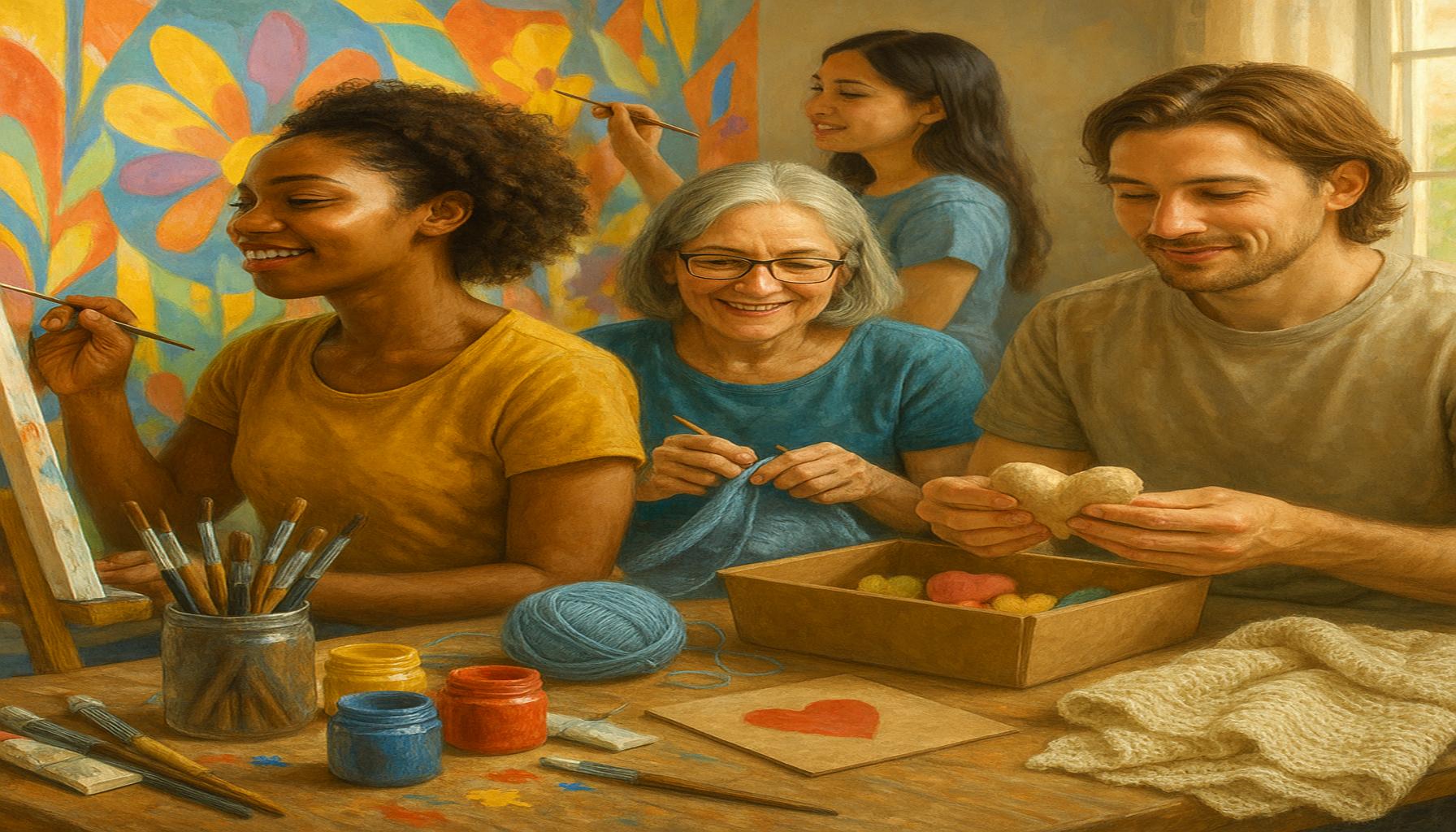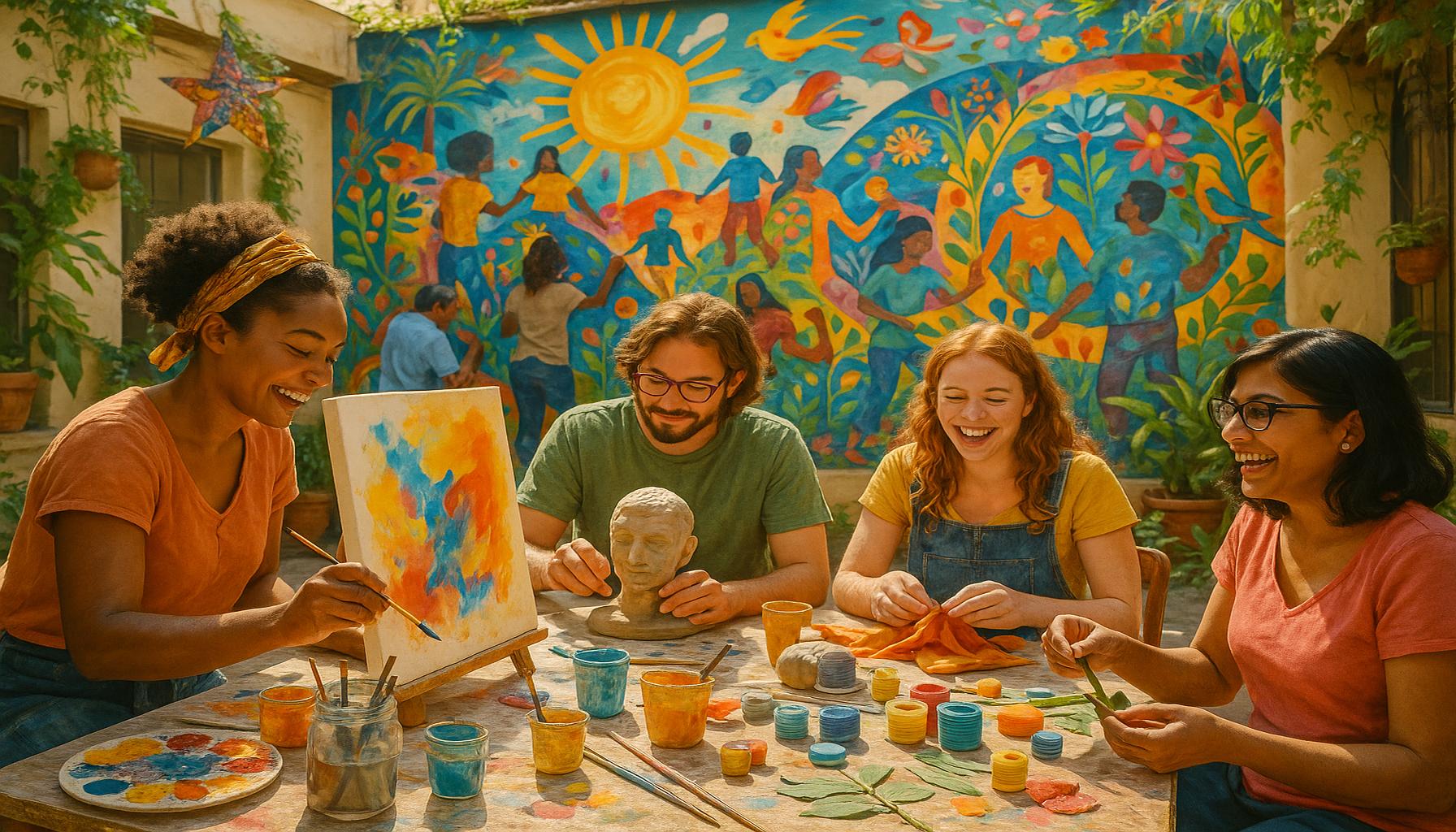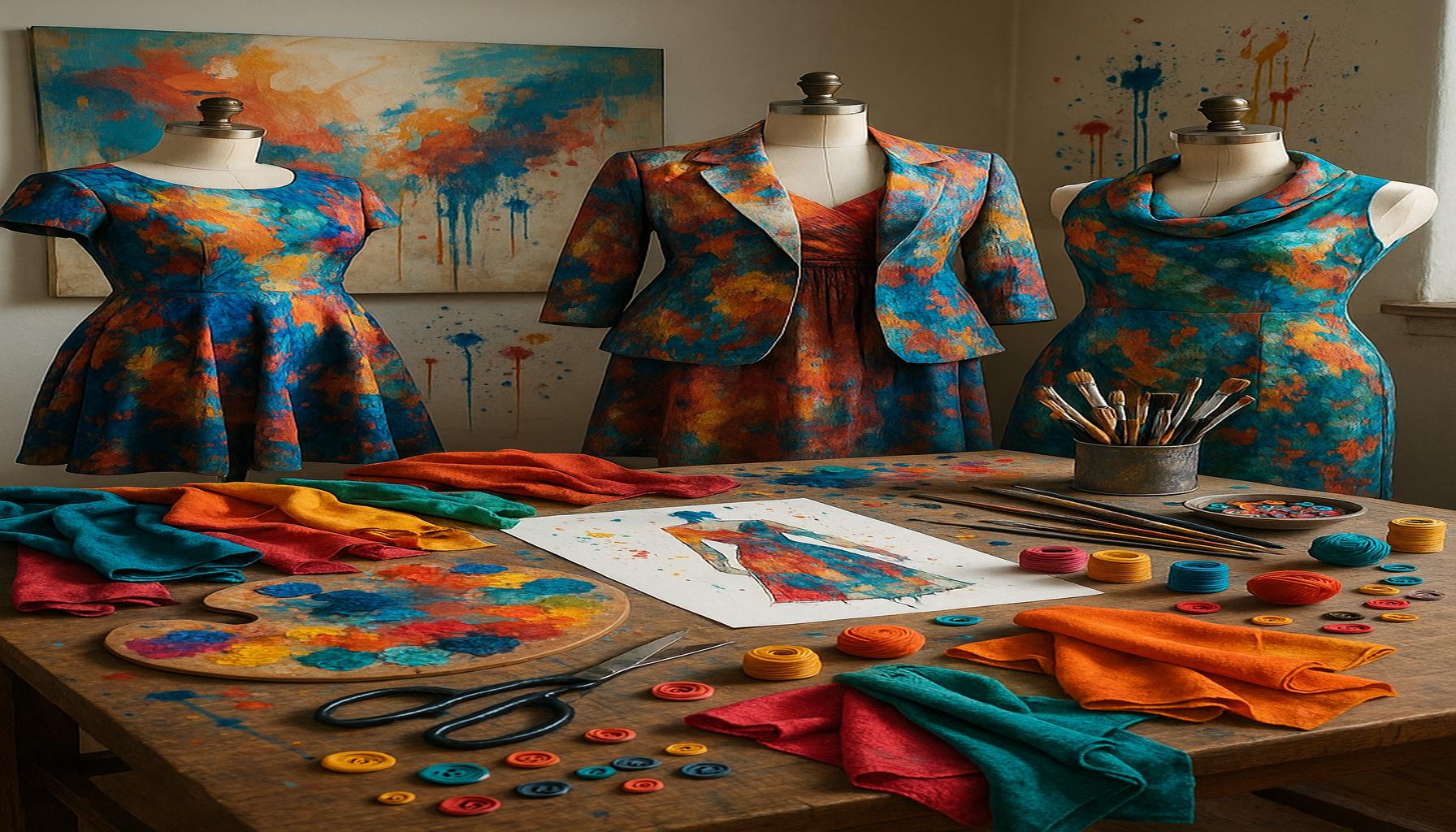The Influence of Space on Artistic Creation: How the Environment Shapes Our Hobbies
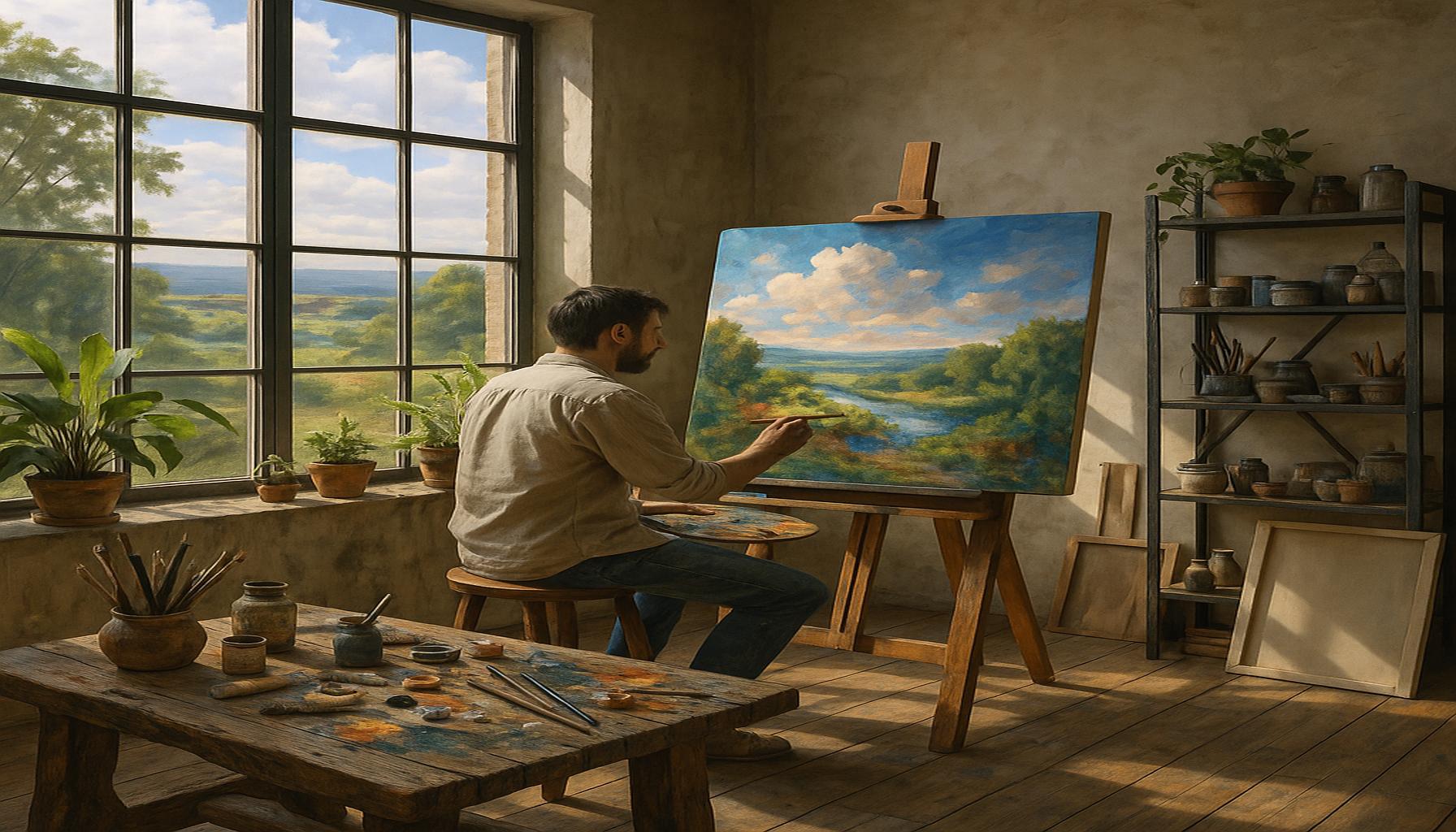
The Connection Between Space and Creativity
The spaces we inhabit profoundly impact our artistic expressions, underscoring the interplay between environment and creativity. From tranquil natural settings to bustling urban landscapes, various environments contribute uniquely to the creative process. This connection is not just incidental; rather, it reveals fascinating insights into how our surroundings shape artistic endeavors and hobbies, influencing everything from mood to inspiration.
Key Factors Influencing Artistic Creation
- Natural Surroundings: Parks, forests, and bodies of water possess an intrinsic beauty that evokes inspiration. For example, the serene landscapes of places like Yosemite National Park have captured the imagination of countless artists from Ansel Adams to modern-day photographers, illustrating how nature can serve as both a backdrop and a muse. The tranquil sounds of rustling leaves or flowing streams can create a meditative state, ideal for enhancing creativity.
- Urban Landscapes: In stark contrast, cities are energetic and vibrant environments that spark new ideas and trends in art. Take New York City, for instance, where street art flourishes alongside galleries showcasing innovative contemporary pieces. The chaotic blend of cultures, architecture, and social interactions creates a dynamic backdrop that often inspires novel forms of artistic expression. Artists like Jean-Michel Basquiat and Banksy have drawn from urban experiences to create powerful and relatable works, blending graffiti with traditional art forms.
- Personal Spaces: Home studios or cozy corners are essential for fostering a sense of comfort and mental clarity. For many artists, establishing a personal workspace is crucial for creativity. A well-organized studio or a quiet nook filled with cherished books and art supplies can offer the solitude needed for deep creative exploration. Writers like Virginia Woolf emphasized the importance of having a “room of one’s own,” highlighting how a dedicated space contributes significantly to the writing process.
Each of these environments fosters different aspects of artistic creation. Artists often draw from their surroundings, be it through painting, writing, or crafting. For example, the peaceful solitude of a forest can inspire a poet to weave words like leaves falling from trees, while the frenetic pace of a city might prompt a filmmaker to capture the essence of urban life. Understanding how these spaces impact our creative pursuits offers deeper insight into the relationship between environment and expression.
Why This Matters
The influence of space on artistic creation is significant not just for artists but for hobbyists as well. Recognizing this connection can lead to more fulfilling creative experiences. Whether you’re a painter seeking the calm of a lakeside or a musician wanting to capture the eclectic sounds of a busy café, the right environment can make all the difference.
As we delve into the various ways our environments shape our hobbies, we invite you to reflect on your own spaces. Consider how the aesthetics, sounds, and even the energy of a place influence your creative drive. By consciously curating your surroundings, you might unlock new dimensions of inspiration, leading to richer and more rewarding artistic expressions.
DIVE DEEPER: Click here to discover watercolor techniques for beginners
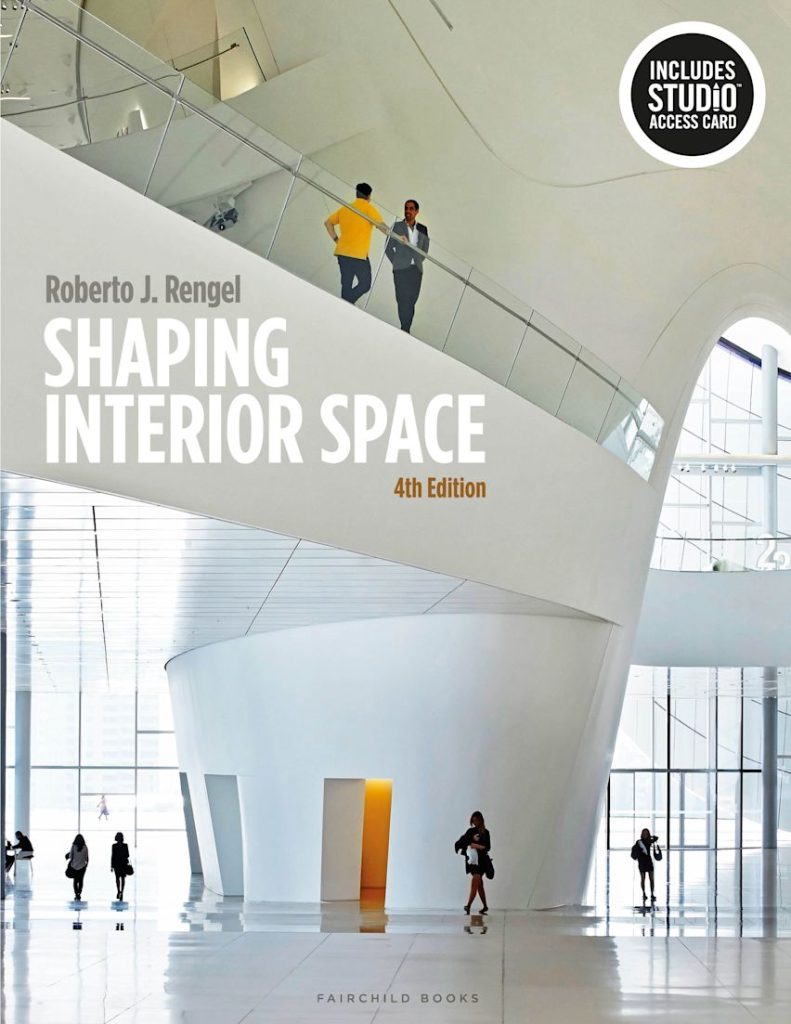
Exploring Different Environments and Their Creative Outputs
The artistic journey is often intertwined with the physical spaces we occupy, illustrating how the influence of environment on creativity can manifest in various art forms. As artists navigate through different settings, they absorb the complexities of their surroundings, translating them into their work. Below, we explore the multifaceted aspects of how different environments contribute to artistic creation.
Natural Inspiration: The Call of the Wild
Artists who venture into the great outdoors frequently find themselves rejuvenated and filled with inspiration. The profound beauty found within natural surroundings fosters an emotional connection that many artists channel into their work. Photographers may venture into remote wilderness areas to capture stunning vistas or the delicate balance of flora and fauna. Painters can be found setting up their easels by a riverbank, trying to immortalize a moment where light dances on the water’s surface. Nature’s palette is limitless, encouraging creativity in various forms, from landscape painting to environmental sculptures. Popular programs like “Art in Nature” have emerged in cities across the U.S., inviting residents to engage deeply with their natural surroundings while fostering artistic exploration.
The Pulse of the City: Urban Life as a Canvas
For many artists, cities serve as vibrant backdrops that invigorate their creative spirits. Urban landscapes, characterized by a mélange of lights, sounds, and cultural diversity, are a breeding ground for innovative ideas. The energy of urban environments can be intoxicating; the hustle and bustle inspire writers and filmmakers alike to craft narratives that reflect the human experience. From the colorful murals that adorn the walls of neighborhoods like Wynwood in Miami to the iconic scenes captured in New York’s Soho district, the city itself transforms into a living canvas where art thrives. Additionally, art initiatives such as public art festivals and street exhibitions encourage artists to engage with the community, revealing how urban interactions influence artistic practices.
The Importance of Personal Spaces
While natural and urban environments provide significant inspiration, personal spaces play a crucial role in fostering creativity. The atmosphere of an artist’s studio or workspace can dictate their enthusiasm and output. A cluttered desk may fuel creativity for one artist, while another may require minimalism to focus their thoughts. The crucial element is the personalization of the workspace; for instance, a writer’s nook adorned with mementos, art supplies, and books can evoke certain feelings that catalyze the writing process. This intimate relationship between artist and workspace signifies that creativity can be cultivated in any environment, provided it resonates with the individual.
Understanding the various influences of space on artistic creation not only expands our appreciation for art but also highlights the importance of selecting the right setting for creative pursuits. Each environment provides distinct stimuli, urging artists to explore and express their thoughts and emotions uniquely. By evaluating how these spaces resonate within your artistic hobbies, you can harness their transformative power, potentially unlocking new creative pathways.
The Impact of Natural Landscapes on Artistic Expression
The relationship between natural landscapes and artistic expression cannot be overstated. Artists often draw inspiration from the world around them, utilizing vibrant colors, textures, and dynamics found in nature to inform their work. For instance, the changing seasons, varying light conditions, and unique geographical features can profoundly influence an artist’s choice of mediums and techniques. This environmental interaction not only enhances the aesthetic appeal of their creations but also connects them deeply to their surroundings.
Urban Environments as a Canvas
Urban environments present a contrasting source of inspiration. The architecture, crowded streets, and cultural diversity offer a completely different palette for artists. Street art and urban photography have gained immense popularity as artists seek to capture the essence and gritty beauty of city life. Through their work, they communicate narratives that reflect social issues, community identity, and individual experiences, making the city a vibrant tapestry for artistic exploration.
The Psychological Effects of Space on Creativity
Research has shown that the psychological effects of physical spaces can significantly influence an artist’s creativity. Spaces that are cluttered and chaotic may hinder imagination, while open, well-lit environments can foster a sense of peace and spark creativity. Moreover, the act of creating in environments rich with history, culture, or personal significance can lead to deeper emotional connections in the artwork produced. This connection not only drives the artist’s inspiration but also enhances viewer engagement with the piece.
Finding Hobbies in Unconventional Spaces
Artists are continually redefining their hobbies and practices by exploring unconventional spaces. From pop-up studios to community gardens, these unique environments encourage collaboration and innovation. This shift towards unconventional spaces allows hobbyists to break free from traditional artistic boundaries, yielding fresh perspectives and approaches to creation. Emerging artists, in particular, benefit from these spaces as they experiment and redefine their personal styles, ultimately reflecting their environments in their art.
| Category | Advantages |
|---|---|
| Natural Landscapes | Inspires vivid use of color and captures seasonal changes. |
| Urban Environments | Fosters unique narratives through street art and urban photography. |
| Psychological Impact | Enhanced creativity and emotional depth in art. |
| Unconventional Spaces | Encourages innovative techniques and collaborations. |
DIVE DEEPER: Click here to discover the art of storytelling
The Cultural Footprint: How Community Shapes Artistic Expression
In addition to personal and natural environments, the cultural landscape significantly influences artistic creation. Communities imbued with rich histories and diverse traditions provide fertile ground for artists to deepen their craft. Cultural festivals, local customs, and community stories serve as vital sources of inspiration, inviting artists to explore and express their connection to their roots. Consider the vibrant artistic scene of New Orleans, where the fusion of Creole, Cajun, and African American cultures inspires musicians, painters, and chefs alike. The annual Mardi Gras celebration not only showcases traditional costumes and floats but also serves as an exhibition of creativity that radiates throughout the city.
Artists as Community Respondents
Artists often act as responders to their communities, using their talents to comment on societal issues, celebrate local culture, or even confront communal challenges. Public art initiatives, such as murals addressing social justice themes or installations that highlight environmental concerns, demonstrate how art captures the spirit of a community. For example, in cities like San Francisco, artists frequently collaborate with local activists to raise awareness about housing equality through visually striking street art. This synergy between creativity and community outcries cultivates a sense of shared identity and history, cementing artists’ roles as pivotal community voices.
The Influence of the Digital Landscape
In today’s rapidly changing world, the digital environment significantly shapes artistic creation as well. The rise of social media platforms such as Instagram and TikTok has altered the way artists share their work, connect with audiences, and even find inspiration. Artists now have the ability to engage with a global community, enabling them to draw insights from a plethora of influences. Digital artists, for example, can collaborate online with peers from different cultures, often resulting in unique creative outputs that fuse varied artistic languages. This digital shift has also democratized art, allowing emerging artists to display their talents without the barriers of traditional gallery systems.
The Comfort of Studio Spaces
The specific characteristics of studio spaces also play a decisive role in an artist’s workflow and overall productivity. Many artists curate their studios to reflect their personal styles, bringing objects, colors, and textures that resonate with their creative processes. For instance, artists like Yayoi Kusama, known for her immersive installations, create spaces that mirror their artistic vision, where every detail contributes to the broader theme of their work. Furthermore, co-working studios, where multiple artists share space and resources, foster collaboration and camaraderie, inviting passionate discussions that spark new ideas. As artists feed on each other’s creativity, these spaces become incubators for groundbreaking work.
Ultimately, the interplay between different environments—be they natural, urban, communal, or digital—creates a dynamic tapestry influencing artistic endeavors. Each environment provides unique challenges and stimuli, propelling artists into uncharted creative waters. By recognizing how these spaces shape artistic expression, one can appreciate the diverse backgrounds from which art emerges, enriching the broader cultural dialogue and inspiring others to explore their own creative potentials.
DIVE DEEPER: Click here to discover the secrets of artisan bread baking
Conclusion: The Interconnectedness of Environment and Artistic Expression
In reflecting on the influence of space on artistic creation, it becomes clear that the environments we inhabit significantly shape our hobbies and creative outputs. Natural settings provide a sensory backdrop that awakens the senses, while urban landscapes pulse with energy and urgency, inspiring artists to produce work that speaks to contemporary issues. Our cultural and communal contexts weave rich narratives that not only influence the themes artists pursue but also anchor them in shared histories and traditions.
Furthermore, the digital landscape has revolutionized artistic engagement, breaking geographical barriers and fostering global collaboration. Artists now draw from an endless pool of inspiration, merging diverse influences to create innovative expressions. Additionally, the comfort of studio spaces—be they personal or communal—enhances creativity, facilitating collaboration and the exchange of ideas among artists. Each of these aspects underscores the vital relationship between space and art, revealing that our environments are not mere backdrops but active participants in the creative process.
As we consider the myriad ways in which our surroundings shape our hobbies and artistic practices, it invites us to be more aware of the spaces we occupy. By embracing the influences of our environments, artists can find new avenues for exploration and expression. Ultimately, recognizing this interconnectedness enriches our appreciation of art and encourages all individuals to delve into their own creative pursuits, inspired by the spaces they inhabit.
